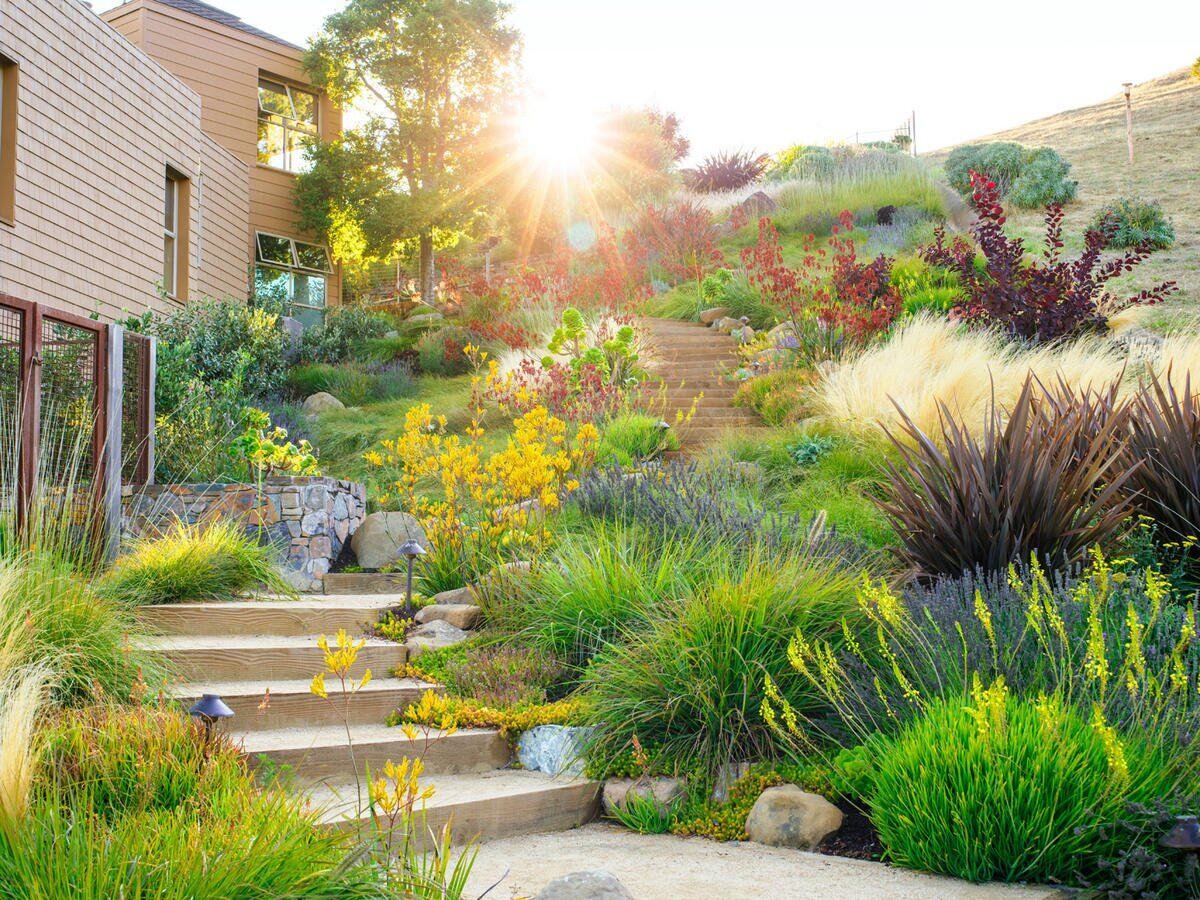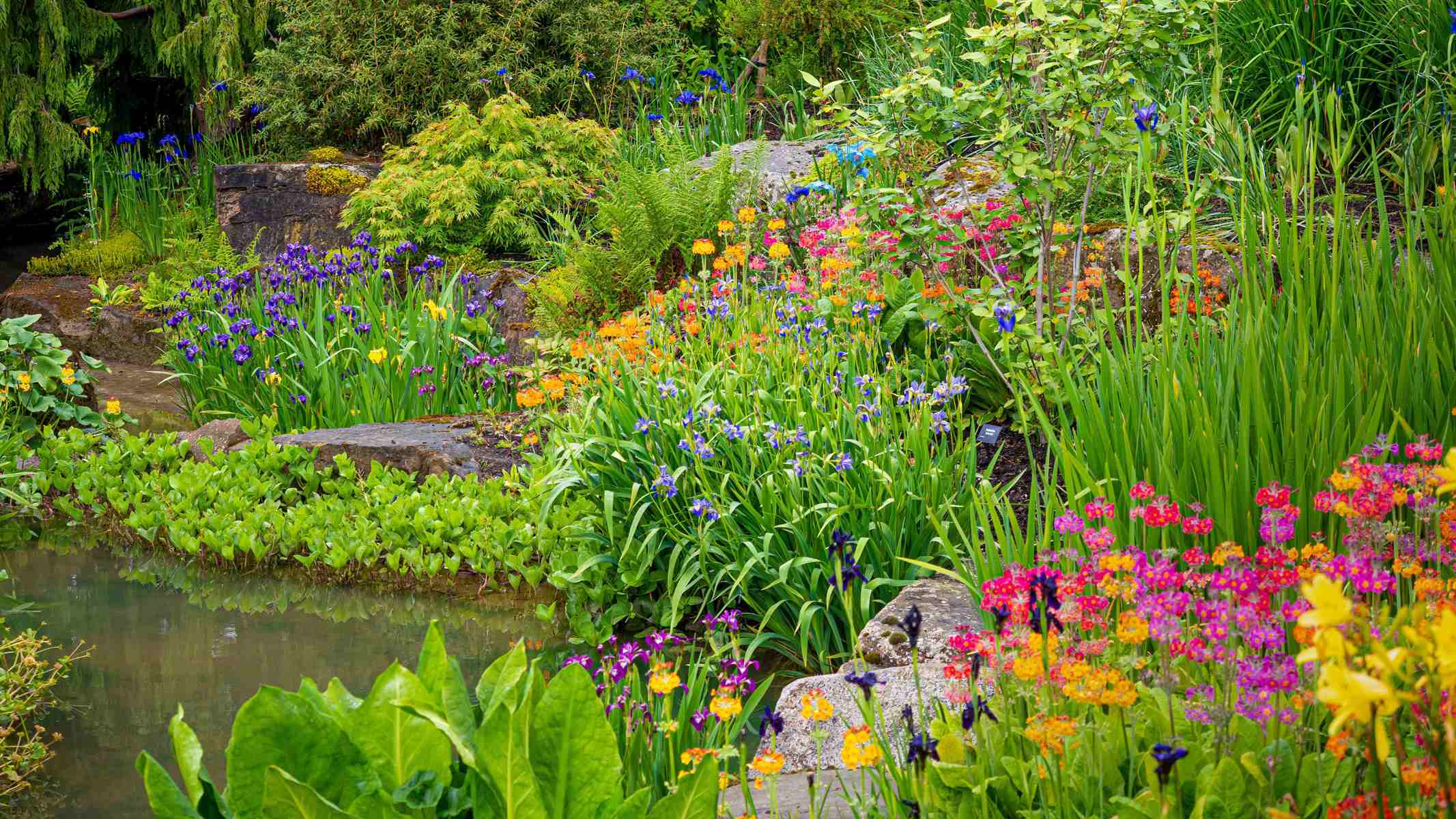Home>Ideas and Tips>How To Design A Drought-Tolerant Native Plant Garden


Ideas and Tips
How To Design A Drought-Tolerant Native Plant Garden
Published: September 19, 2024
Learn how to design a drought-tolerant native plant garden that conserves water, supports biodiversity, and requires minimal maintenance.
(Many of the links in this article redirect to a specific reviewed product. Your purchase of these products through affiliate links helps to generate commission for Storables.com, at no extra cost. Learn more)
Creating a drought-tolerant native plant garden is an excellent way to reduce your water consumption and contribute to environmental sustainability. Native plants are perfectly adapted to the local climate and soil conditions, making them ideal for gardens that require minimal watering. In this article, we will guide you through the process of designing and maintaining a beautiful and resilient native plant garden that thrives with minimal water.
Understanding the Importance of Native Plants
Native plants have evolved over thousands of years to thrive in your specific region. They have developed unique adaptations that allow them to survive and flourish with minimal water, making them perfect for drought-tolerant gardens. Unlike non-native plants, which may require extensive irrigation, native plants can handle the local climate with ease.
Environmental Benefits
- Water Conservation: One of the most significant benefits of using native plants is their ability to conserve water. By choosing plants that are adapted to your local climate, you can significantly reduce your water consumption.
- Soil Health: Native plants often have deep root systems that help to stabilize soil and prevent erosion. This improves soil health and reduces the need for fertilizers.
- Biodiversity: Native plants provide habitat for local wildlife, supporting biodiversity and contributing to a healthier ecosystem.
- Low Maintenance: Native plants are generally easier to maintain than non-native species. They require less pruning, fertilizing, and pest control.
Site Preparation
Before you start planting, it's crucial to prepare your site properly. This involves removing existing lawn or other vegetation and preparing the soil for native plants.
Removing Lawn
- Assess Your Lawn: Determine the type of grass you have. Some grasses, like Bermuda grass, can be particularly challenging to remove.
- Remove Lawn: You can either dig out your lawn or use sheet mulching or solarization to kill the existing vegetation.
- Prepare Soil: Once you have removed the lawn, you need to prepare the soil for planting. This may involve solarizing the soil to kill weed seeds or adding organic mulch to improve soil health.
Designing Your Garden
Designing a drought-tolerant native plant garden involves several key steps:
- Research Native Plants: Learn about the native plants in your area. Understand their growth habits, water requirements, and any specific needs they may have.
- Site Analysis: Assess your garden site. Consider factors like sunlight, soil type, and drainage.
- Create a Planting Plan: Based on your research and site analysis, create a planting plan that includes a variety of native plants.
Choosing Drought-Tolerant Native Plants
When selecting drought-tolerant native plants, it's important to choose a mix of plants that will thrive in different conditions.
For Full Sun Areas
- Spanish Lavender: This plant is known for its beautiful purple flowers and can thrive in full sun with minimal watering.
- Dwarf Manzanita Groundcovers: These groundcovers are perfect for areas with full sun and can provide excellent ground cover with minimal maintenance.
- Oat Grass: Oat grass is another excellent option for full sun areas and can add texture and interest to your garden.
- Heather: Heather plants are known for their low maintenance requirements and can thrive in full sun with minimal watering.
- California Lilac: This plant produces beautiful purple flowers and can handle full sun with ease.
For Shaded Areas
- Sword Fern: Sword ferns are excellent for shaded areas and can thrive with minimal watering. They are also relatively easy to establish and can tolerate less-than-ideal soil conditions.
- Madrone: Madrone trees are perfect for shaded areas and have a unique, rugged appearance that adds character to any garden.
For Mixed Sun/Shade Conditions
- Native Grasses: Native grasses like grama grass or dwarf fountain grasses can handle mixed sun/shade conditions and add texture and movement to your garden.
- Rosemary: Rosemary is a versatile herb that can thrive in both sun and shade conditions and adds a fragrant element to your garden.
- Hebe: Hebe plants are known for their low maintenance requirements and can handle mixed sun/shade conditions with ease.
Planting Tips
When planting native plants, it's crucial to follow some specific tips to ensure they thrive:
Plant Size Matters
- Use Larger Plants: Native plants generally perform better when planted in larger sizes (2-gallon pots or larger). This is because they have a more established root system which helps them establish quickly in their new environment.
- Avoid Small Plants: While smaller plants like 1-gallon sword ferns can be used, they may not establish as quickly as larger plants.
Planting Depth
- Plant at the Right Depth: When planting native plants, it's best to plant them at an inch or two higher than they were in their pots. This helps prevent water from collecting around the roots and reduces the risk of root rot.
Read more: How To Design A Drought-Tolerant Landscape
Mulching and Watering
- Mulch Around Plants: Mulching around plants helps retain moisture in the soil and reduces evaporation. It also suppresses weeds which can compete with your native plants for water and nutrients.
- Water Carefully: Water your plants carefully during their first summer after planting. A slow, long soak is better than daily light sprinkles of water.
Mixing Native Plants with Non-Native Plants
While native plants are ideal for drought-tolerant gardens, you may also want to include some non-native plants that complement them well.
Benefits of Mixing Plants
- Visual Interest: Mixing native plants with non-native plants can add visual interest and variety to your garden.
- Pollinator Support: Non-native plants like Spanish lavender or rosemary can provide nectar for pollinators like bees and butterflies, supporting biodiversity in your garden.
Examples of Mixed Plantings
- Full Sun Area: For a full sun area, you might include Spanish lavender, dwarf manzanita groundcovers, oat grass, heather, California lilac, true dwarf pines, smoke tree, madrone trees, grama grasses, dwarf fountain grasses, rosemary, hebe plants like ‘Elfin Pink’ thyme.
- Shaded Area: In a shaded area you might include sword ferns which can thrive even without regular summer watering when planted in shady conditions.
Irrigation Techniques
While native plants are designed to thrive with minimal watering, they may still require some supplemental irrigation during their first year after planting or during periods of prolonged drought.
Avoiding Drip Irrigation
- Drip Irrigation Risks: Drip irrigation can create warm, moist soil conditions that native plants dislike. This can lead to root rot and disease.
- Rain Showers Mimicry: Instead aim to mimic nature's rain showers by using techniques like soaker hoses or sprinklers that deliver water slowly over an extended period.
Supplemental Watering
- Summer Watering: While native plants generally require less water than non-native species they may still benefit from occasional supplemental summer watering especially during their first year after planting.
- Dust Removal: A light shower every few weeks can help remove dust from foliage keeping your plants looking their best even during hot summer months.
Maintenance Tips
Once your garden is established maintaining it requires minimal effort but some regular care ensures it continues thriving:
Mulching
- Mulch Maintenance: Mulch around plants annually especially during fall and spring seasons helps retain moisture suppress weeds prevents soil erosion.
- Avoid Fertilizing: Native plants generally do not require fertilizers as they have adapted to local soil conditions over time avoid fertilizing unless absolutely necessary.
Pruning
- Prune Sparingly: Prune native plants sparingly only when necessary avoid over-pruning which can stress plants making them more susceptible to disease pests.
- Deadheading: Remove spent flowers deadheading encourages new blooms maintains plant appearance.
Conclusion
Designing a drought-tolerant native plant garden is an excellent way to reduce your environmental footprint while creating a beautiful resilient landscape that thrives with minimal water consumption by following these steps you can create an attractive low-maintenance garden that supports local biodiversity contributes positively towards environmental sustainability.
By choosing native plants that are perfectly adapted to your local climate soil conditions you can enjoy lush vibrant gardens without worrying about high water bills or the environmental impact of excessive irrigation practices.
Remember always do your research understand specific needs each plant variety before planting ensure proper site preparation planting techniques maximize chances success creating thriving drought-tolerant native plant garden that brings joy both you local wildlife alike
Was this page helpful?
At Storables.com, we guarantee accurate and reliable information. Our content, validated by Expert Board Contributors, is crafted following stringent Editorial Policies. We're committed to providing you with well-researched, expert-backed insights for all your informational needs.












0 thoughts on “How To Design A Drought-Tolerant Native Plant Garden”